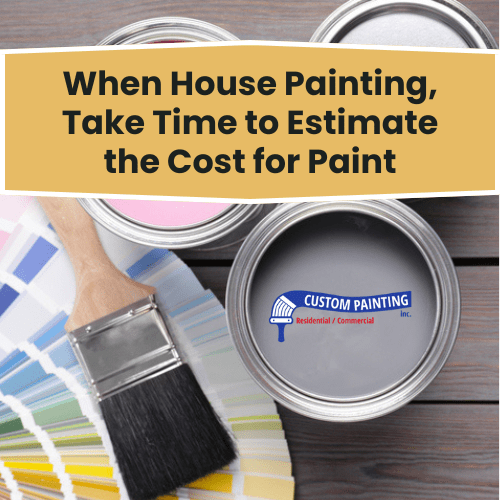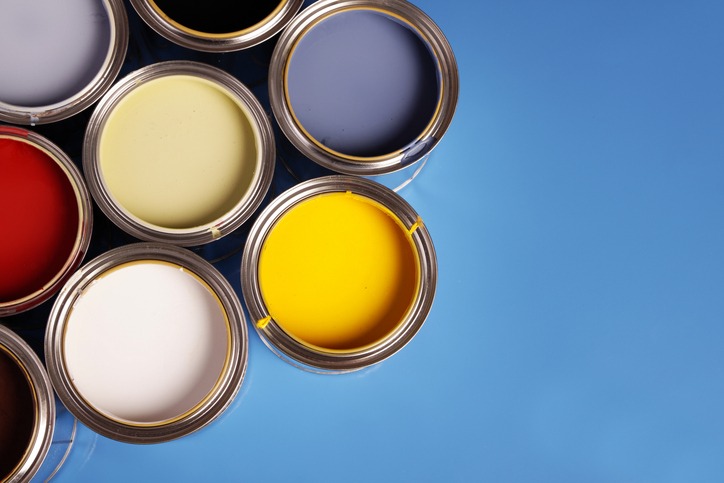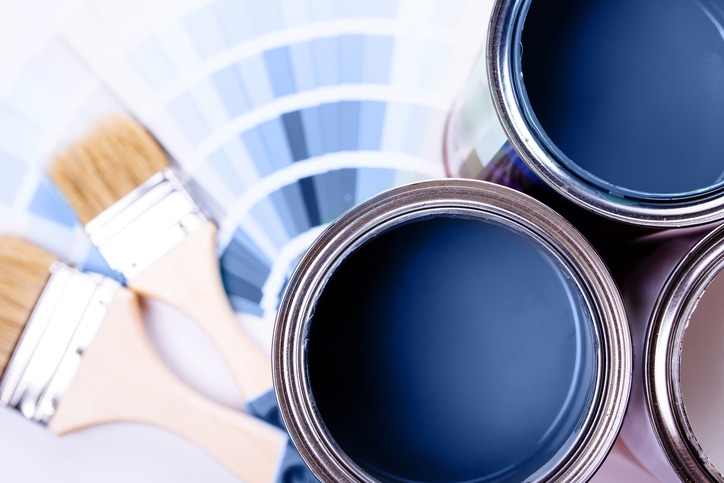Embarking on a house painting project can be an exciting venture that breathes new life into your home. However, one of the fundamental aspects of planning such a project involves carefully estimating the cost of paint. This step is crucial, as it helps you budget effectively and avoid unexpected expenses.
Accurately estimating how much paint you’ll need and how much it will cost ensures that your home improvement project proceeds smoothly without financial hiccups. In this article, we’ll guide you through the necessary steps to calculate the amount of paint required for your house and how to factor in the costs, making your painting project a well-planned success.
The Factors that Affect Paint’s Costs
When planning a house painting project, understanding what affects the cost of paint can help you budget more accurately and choose the right products for your needs. Several factors can influence the price of paint, from the quality and type of paint to the surface area and method of application. Here’s a closer look at some of the key elements that determine how much you’ll spend on paint for your home.
Quality of Paint
The quality of the paint is a major determinant of cost. Higher-quality paints often contain more pigments and fewer fillers, leading to richer color and better coverage with fewer coats. These paints also tend to be more durable and resistant to fading, chipping, or cracking, which means they can last longer before needing a touch-up or repaint. While premium paints may have a higher upfront cost, they can be more cost-effective in the long run due to their longevity and superior finish.
Type of Paint
The type of paint you choose also affects the price. For example, oil-based paints are generally more expensive than water-based latex paints, but they offer a harder finish and are often preferred for their durability in high-traffic areas or on certain surfaces. Specialty paints, such as those with mold-resisting properties or those designed for specific surfaces like metal or concrete, can also be more costly than standard interior or exterior paints.
Paint Finish
The finish of the paint—whether it’s matte, eggshell, satin, semi-gloss, or high-gloss—also plays a role in cost. Generally, higher gloss finishes are more expensive. They require more resins and additives to create a shiny, reflective surface, which adds to the production costs. Glossy finishes are also more durable and easier to clean, which can make them a preferred choice for areas that need frequent cleaning.
Color
Believe it or not, the color of the paint can impact the price as well. Lighter colors may require more coats to achieve the desired opacity and finish, especially if painting over a darker shade. On the other hand, some vibrant or deep colors might use more expensive pigments, increasing the overall cost of the paint. Custom-mixed colors can also be more expensive than standard ones.
Coverage Area and Paint Absorption
Finally, the total area to be painted and the surface’s absorbency affect how much paint you’ll need, which in turn impacts cost. Rough, porous surfaces like brick or stucco will absorb more paint, requiring more product to cover the same area as a smooth surface like plastered walls. Calculating the square footage of the project and considering the nature of the surface can help you estimate the amount of paint needed more accurately, thus affecting the total cost.
Would it be Advisable to use Affordable Paint?
Deciding whether to use affordable paint for your home project is an important consideration that hinges on several factors, including the project’s scope, the area you’re painting, and your long-term expectations for durability and appearance. Here’s a closer look at the implications of opting for less expensive paint options:
Using affordable paint can be a tempting choice, especially when working within a tight budget. These paints typically cost less due to lower levels of pigments and sometimes a reduction in the quality of binders and additives used. For temporary or short-term projects, such as painting a rental property or preparing a house for sale, affordable paint might serve well enough. It allows you to freshen up a space without a significant financial outlay.
However, the downsides of choosing cheaper paint become apparent in durability and overall quality. Economical paints often require more coats to achieve the same opacity and color richness as higher-quality options, which could negate some of the initial savings. Additionally, they may not withstand wear and tear as effectively, leading to earlier chipping, fading, or the need for more frequent touch-ups. This can be particularly troublesome in high-traffic areas or rooms exposed to moisture, such as kitchens and bathrooms.
Moreover, while the upfront cost of cheaper paint is lower, the long-term expense should be considered. The need for more frequent repainting not only increases material costs over time but also the labor involved, whether it’s your time or money spent on professional painters.
Tips for Estimating the Costs for Your House’s Paint
Estimating the costs of painting your house is a crucial step in planning any home improvement project. Accurate cost estimation ensures you stay within budget and avoid unexpected expenses. Here are some practical tips to help you accurately estimate how much you’ll need to spend on paint for your house:
- Calculate the Square Footage: Measure the walls or surfaces to be painted to determine the total square footage. Remember to subtract the area of doors, windows, and any other spaces that won’t need paint. Knowing the exact area you need to cover will help you estimate the amount of paint required more accurately.
- Check Paint Coverage: Paint cans typically list the coverage they provide, usually measured in square feet per gallon. Check this detail to understand how far a gallon of paint will go. Keep in mind that rough or textured surfaces might require more paint than smooth surfaces.
- Plan for Multiple Coats: For most painting jobs, you will need at least two coats of paint. This is especially true if you are making a dramatic color change. Planning for multiple coats will help you buy the correct amount of paint from the start, avoiding mid-project trips to the store.
- Factor in the Type of Paint: The cost of paint can vary significantly based on its type and quality. High-quality paint, while more expensive, often covers more area and lasts longer. Decide what type of paint suits your needs and budget, and then calculate the cost based on the required quantity.
- Consider Additional Supplies: Beyond just paint, you’ll need other supplies like primer (especially if you’re covering dark walls or painting over bare surfaces), brushes, rollers, painter’s tape, drop cloths, and possibly a ladder. These supplies can add significantly to the overall cost, so include them in your budget.
- Get Quotes for Professional Services: If you plan to hire professionals, get several quotes to compare prices. Make sure the quotes include all the services you expect, like surface preparation and cleanup. This will give you a clearer idea of the total cost and help you find the best value.
Conclusion
Accurately estimating the cost of paint for your house painting project is an essential step that can save you time and money. By carefully measuring your space, considering the type of paint and the number of coats needed, and accounting for additional supplies and potential professional help, you can set a realistic budget that prevents surprises. If you need assistance with your painting project or if you’re looking for professional advice or services, Custom Painting, Inc. is here to help. Reach out to us by calling (925) 294-8062 or by filling out our contact form on our website.



